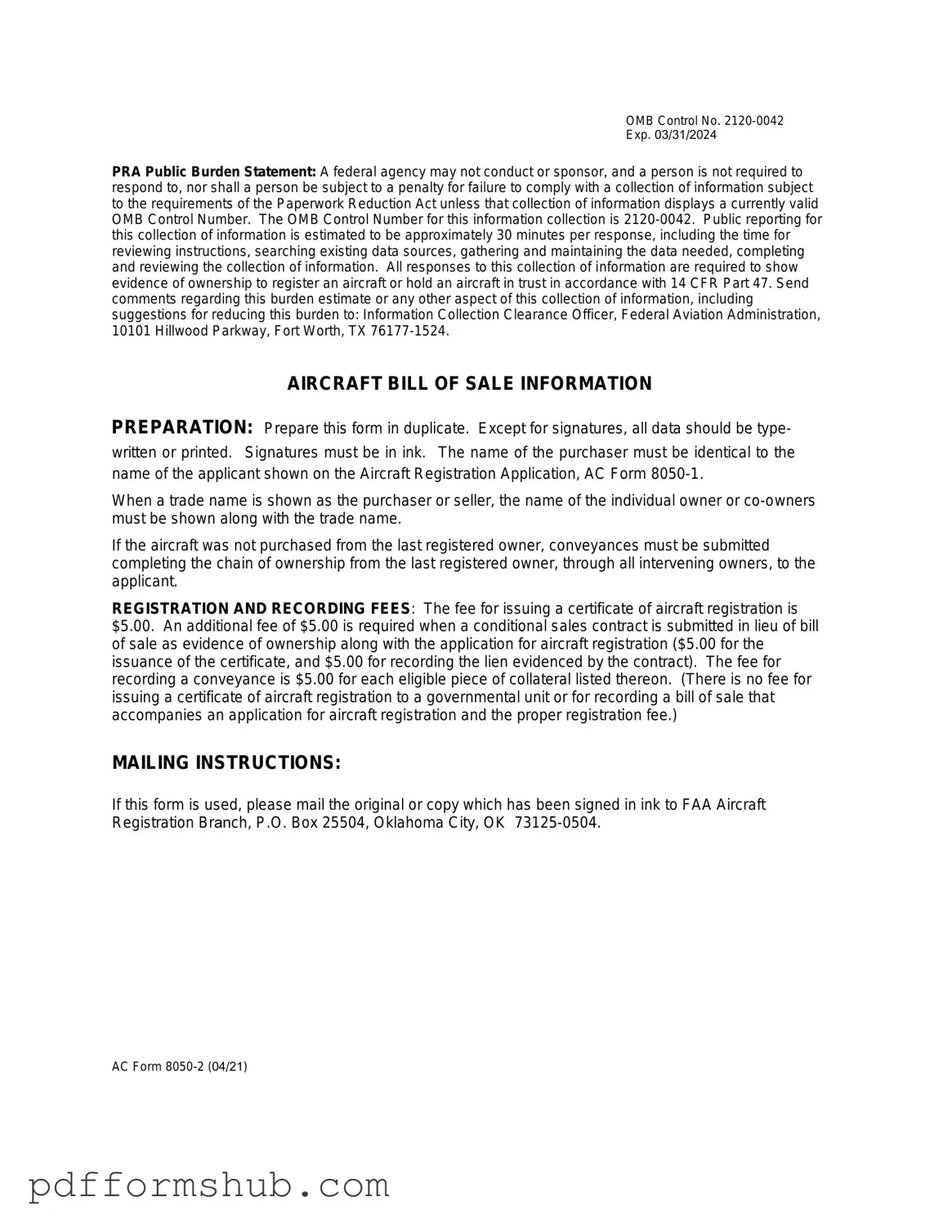Fill in Your Aircraft Bill of Sale AC 8050-2 Form
The Aircraft Bill of Sale AC 8050-2 form is a crucial document used to transfer ownership of an aircraft. This form serves as legal proof of the sale and outlines essential details about the aircraft and the parties involved. Understanding how to properly fill out this form is vital for a smooth transaction.
Ready to complete your Aircraft Bill of Sale? Click the button below to get started!
Customize Form
